Male vocals
Men’s games, soldiers, first-person shooters – here we use, of course, a sloping,yes, stiff “Yes, sir!”. Let’s start from below and look at the basic voice frequency of the male voice, which ends up at about 150 Hz. An overemphasis makes the voice roar to the most incomprehensible, without then appearing somehow natural. Overemphasized basses, by the way, are much worse than slightly more restrained interpretations.
Between around 1.5 to 3.5 kHz lies the overtone reproduction of the male voice, which mainly decides on timbre and recognition. If the sound is tinkered with here, the voices lose their character and the spatial assignment suffers quite a bit.
The peculiar speech intelligibility is calculated in the range between 3.5 and approx. 6.5 kHz; depending on the tuning position, even up to approx. 10 kHz. We see in the spectrum very nicely the hissing sound at the pulled together S between Yes and Sir. In the range around eight kHz we also see breathing and air noises, which are especially important for quietly whispered voices.
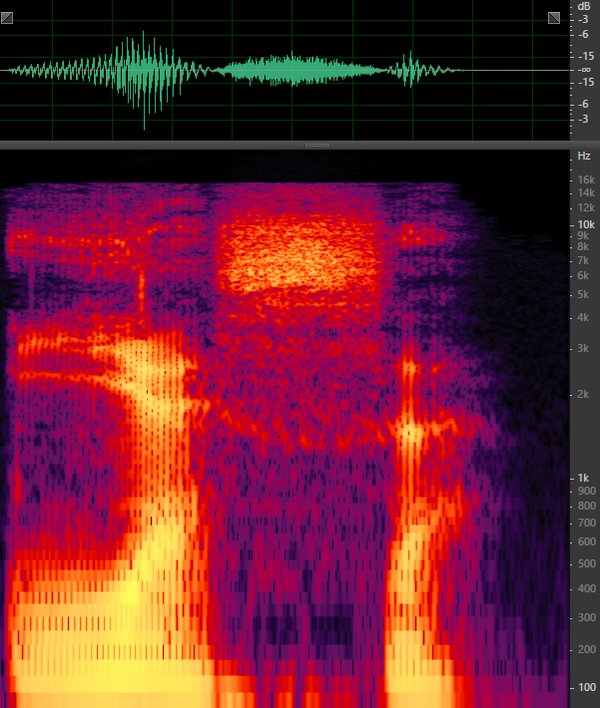
Female vocals
The basic frequency is now slightly higher and, depending on the tuning position, is between approx. 150 Hz and 450 Hz in the range of the lower mids. The statements about overtone reproduction and sibilants as well as speech and breathing air noises then coincide again with the male voices. The hissing sound “Sch” can be clearly recognized at the beginning with the lustfully breathed word “Sugar”, as well as the still measurable and audible air noises.
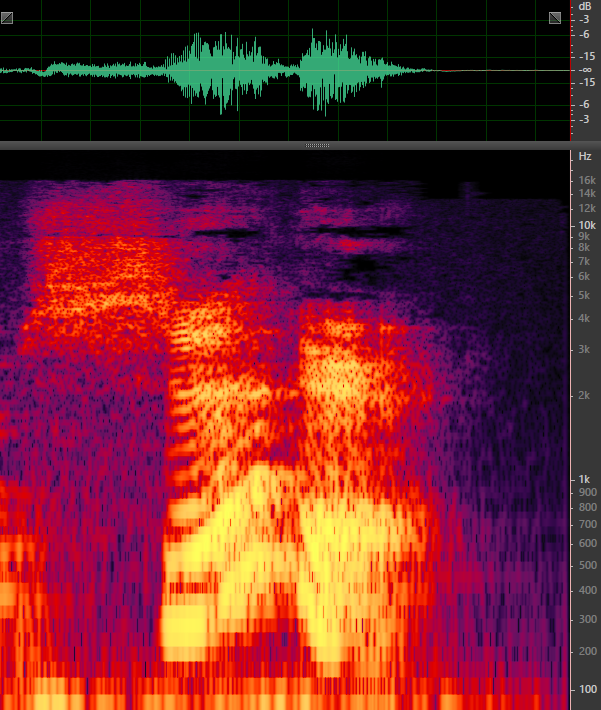
Complex situation: jungle sounds with screaming animals
We had already analyzed the human voice, here now a jungle situation with screaming four-legged contemporaries, which spread (very complex) especially in the middle and high-pitched range.
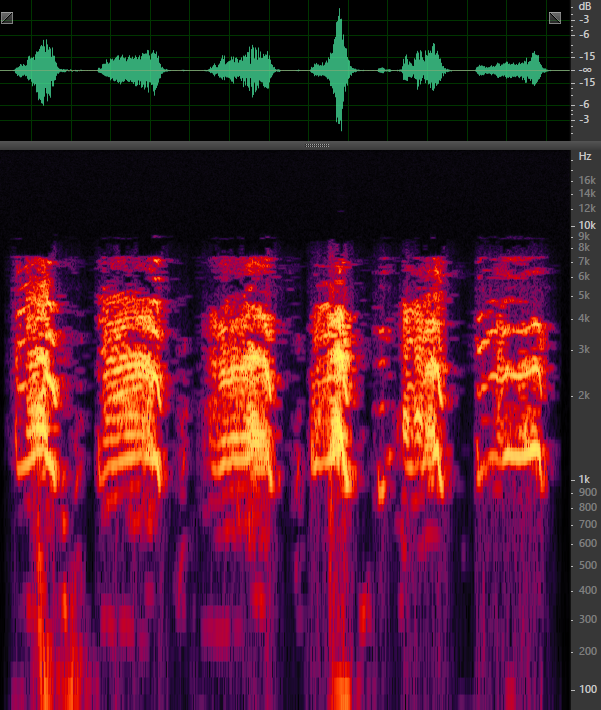
In direct comparison between neutral sound and gaming headsets, the good linear headphones always wins (almost) always. While the much-loved dent at 400 to 500 Hz negatively affects the female vocals and long-barreled rifles, only the overstressing at approx. eight to 10 kHz slightly increase the perception of whispered or slightly hung speech shreds. Only this can be achieved if necessary with a neutral device and each equalizer, but is not punished with a fixed permanent peak.
Running on gravel outdoors
Things like gravel offer a very interesting and above all wide spectrum. By rolling, pressing and skipping the sharp-edged, small stones, besides the dominant basic tone up to about 150 Hz, a very delicate sound carpet is created, which reaches up to 20 kHz (and higher) and which requires the most linear curve possible for a true-to-life reproduction. Any over- or under-emphasis will strongly influence the sound character, so that Rollsplitt can quickly degenerate into coarse gravel if you exaggerate it during the sound.
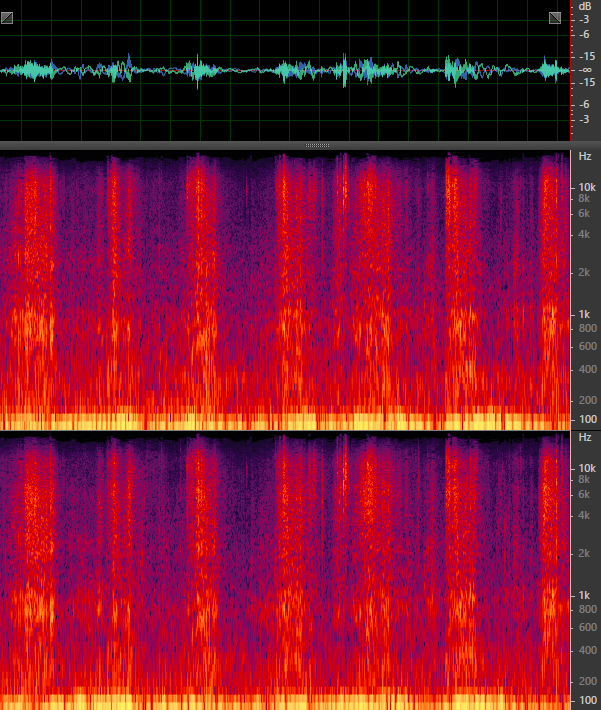
By the exception, I have also listed both channels, so that one can better see the runtime differences and levels, which leave a well audible spatial impression, because stones do not behave evenly.
Running on solid ground in rooms
You get a completely different picture! The frequency band of the actual step ranges fairly balanced from about 180 Hz to six kHz and ends only at about 16 kHz. Each room, however, also avoids even more or less diffuse reflections, which we can recognize very nicely between the steps in the spectrum shown. Our example shows a vehicle hall with concrete floor.
Thus, the basic tone of the occurrence reverberates at about 250 Hz, while the typical “space sound” of this very special spatiality extends from about 500 Hz to about five kHz. If strong sounding comes to the fore here, actually dull trowel rooms sound way too sharp or in the unswept case a large hangar like a dark gully hole.
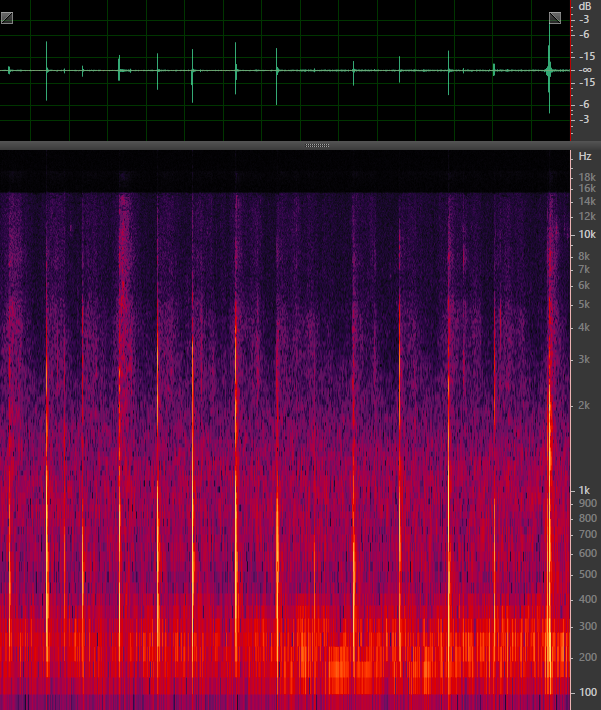
Running in the snow
We find here a very broadband noise, which requires a linear course over the entire frequency range. Missing individual areas, the sound becomes rather sandy and dull, in the opposite case metallic pointed.
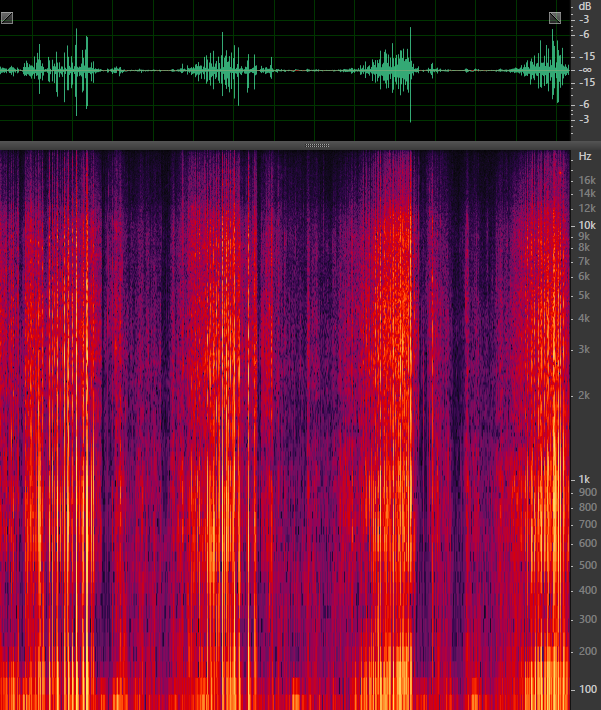
Running in the grass
Missing the lower mids, the creeping sniper quickly degenerates into a profane infantry tramp animal. The mainly used frequency range extends up to only about 1.5 kHz, so that above all a balanced playback curve up to two kHz is important.
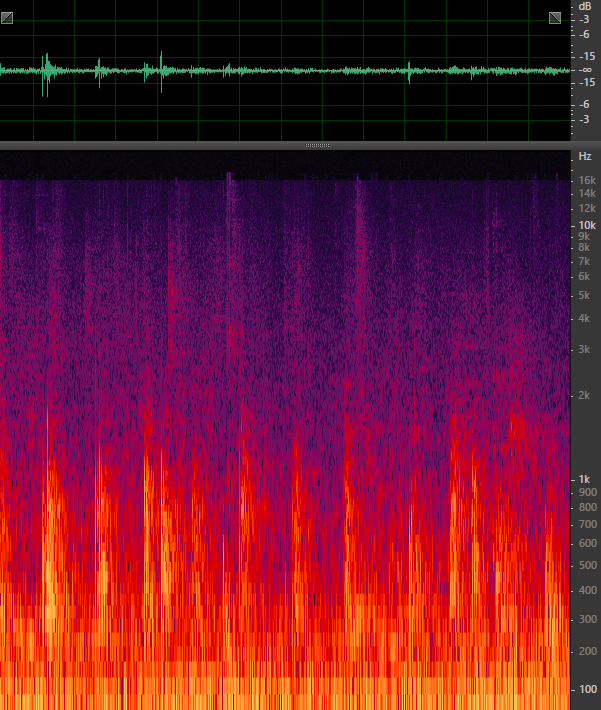
The march of better hearing creeping opponent is and remains a popular PR myth. Because as versatile as the sound spectra on a wide variety of surfaces are, it is also impossible to emphasize all this optimally through sounding. As always, the golden center is linear!
- 1 - Einführung und Übersicht
- 2 - Alles über Schall und Frequenzen
- 3 - Räumliches Hören, Surround und viel Voodoo
- 4 - Sounding: Markting-Gag oder Skill-Verstärker?
- 5 - Menschliche Sprache, Tiere, Bewegungen
- 6 - Typische Kampf- und Transportmittelgeräusche
- 7 - Wie wir messen und urteilen
- 8 - Fazit und Zusammenfassung

































2 Antworten
Kommentar
Lade neue Kommentare
Urgestein
1
Alle Kommentare lesen unter igor´sLAB Community →